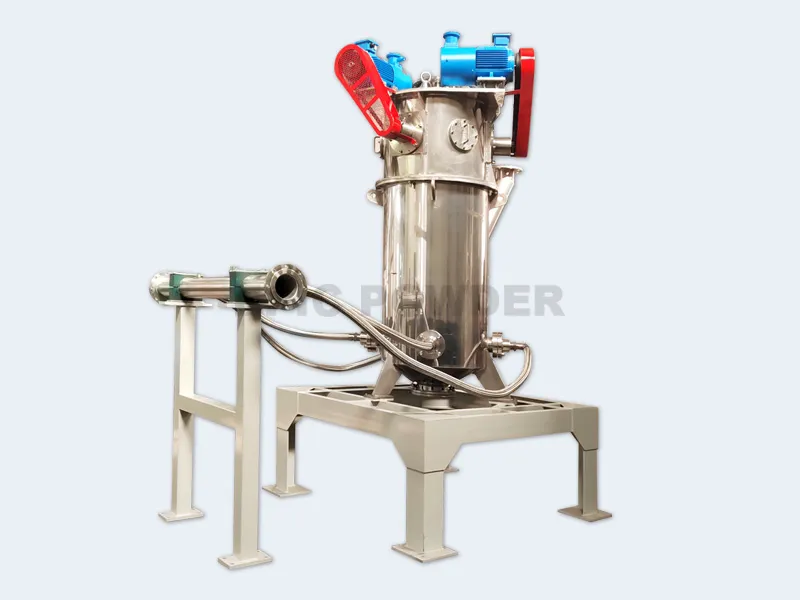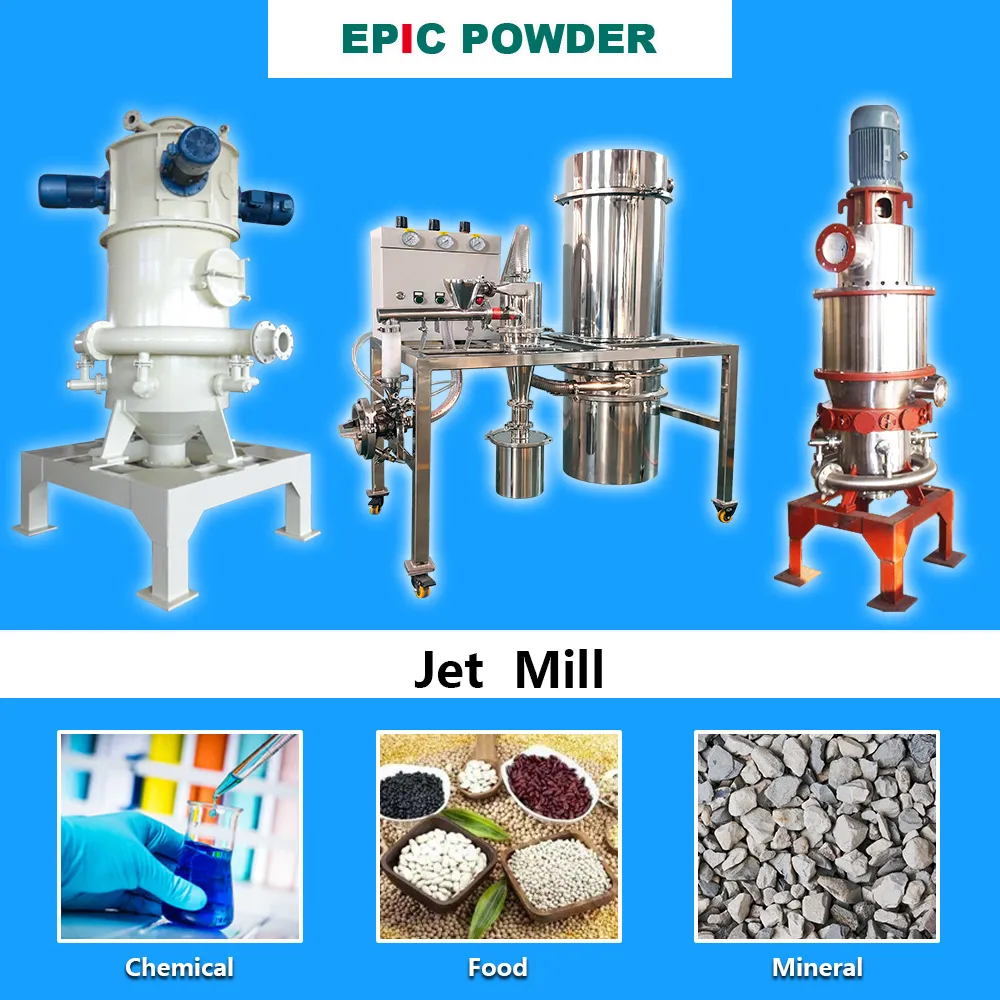الطحن النفاث technology is popular in industries such as chemicals, pharmaceuticals, metallurgy, and materials processing. Among these, fluidized bed jet mills and steam jet mills are two important types of ultra-fine grinding equipment. Although both utilize high-speed airflow to achieve particle size reduction, they differ significantly in terms of working principles, power sources, applicable materials, energy consumption, and particle size control.
الطاحونة النفاثة ذات الطبقة المميعة
The fluidized bed jet mill uses compressed air, nitrogen, or other inert gases as the power source. The accelerated gas goes through nozzles to form supersonic airflow, fluidizing the material in the grinding chamber (similar to a boiling state). Particles collide and rub against each other (self-grinding effect) under the action of the high-speed airflow, achieving ultra-fine grinding.

Key Workflow
1. Feeding System: Material is fed into the grinding chamber via screw conveyor or pneumatic transmission.
2. Fluidized Grinding: High-speed airflow suspends the material and promotes inter-particle collisions, avoiding mechanical wear.
3. Classification System: The classification system employs a built-in dynamic or static classification wheel. It returns coarse particles for further grinding and directs fine powder into the collection system.
4. Collection System: Cyclone separator + bag dust collector or wet collection ensures efficient recovery of fine powder.
Core Features
Applicable Materials: Brittle materials (e.g., chemical raw materials, pharmaceuticals, ceramics, non-metallic minerals).
Fineness: Typically achieves D50 = 1–10 μm; some materials can reach sub-micron level (<1 μm).
Temperature Control: Low-temperature grinding (due to airflow expansion and heat absorption), suitable for heat-sensitive materials (e.g., pharmaceuticals, polymers).
Energy Consumption: Lower than mechanical grinding but slightly higher than steam jet mills (relies on air compressors).
Pollution Control: Inert gases (e.g., N₂) is important for explosion-proof and anti-oxidation grinding.
Typical Applications
Chemical industry: Nano-processing of pigments, dyes, and pesticides.
New materials: Precision processing of lithium battery cathode/anode materials and ceramic powders.
Steam Jet Mill
The steam jet mill uses high-temperature, high-pressure steam (pressure: 6–12 MPa, temperature: 200–400°C) as the power source. The high-speed steam goes through Laval nozzles to supersonic speeds (2–3 Mach), driving high-speed collisions between particles. Due to the higher kinetic and thermal energy of steam, it effectively crushes high-hardness and high-toughness materials.

Key Workflow
1. Steam Generation System: A boiler produces high-pressure steam, regulated by pressure-reducing valves.
2. Supersonic Jet: Steam forms a high-speed jet through the nozzles, sucking in and accelerating the material.
3. Impact Grinding: Particles collide with each other or with target materials in the high-speed steam flow, achieving ultra-fine grinding.
4. Classification and Collection: Typically goes with a turbo classifier. Coarse powder is recycled, and fine powder is collected via condensation.
Core Features
Applicable Materials: High-hardness (Mohs hardness ≥7) and high-toughness materials (e.g., metals, silicon carbide, diamond).
Fineness: Can achieve nanoscale (100–500 nm); some materials can be processed into ultra-fine powders.
Temperature Impact: Steam’s high temperature may affect heat-sensitive materials, but this can be optimized by adjusting steam parameters.
Energy Consumption: Relatively high (requires a steam boiler) but offers better energy efficiency per unit compared to mechanical methods.
Pollution Control: Steam can be condensed and recycled, making it suitable for flammable and explosive materials (e.g., metal powders).
Typical Applications
Metal powders: Ultra-fine preparation of titanium, aluminum, and nickel-based alloy powders.
Military materials: Nano-processing of high-strength materials like tungsten alloys and boron carbide.
New materials: Precursor preparation for graphene and carbon nanotubes.
خاتمة
Choose a Fluidized Bed Jet Mill When:
Materials are brittle and heat-sensitive (e.g., pharmaceuticals, fine chemicals). Narrow particle size distribution is required (D90 controllable). No steam system is available, and compressed air is preferred.
Choose a Steam Jet Mill When:
Materials are high-hardness and high-toughness (e.g., metals, ceramics). Nanoscale grinding is required (e.g., high-end material preparation). A steam boiler is already available or higher energy consumption is acceptable.
They are not the same equipment and are designed for different purposes.
Fluidized bed jet mills are more versatile and suitable for most fine chemical and pharmaceutical industries. Steam jet mills are specialized for difficult-to-grind materials, rely on steam systems, and are used in specific fields.
Selection should consider material properties, fineness requirements, energy consumption, and process compatibility.
ماكينات مسحوق EPIC
Epic Powder specializes in providing advanced grinding solutions, including both fluidized bed and steam jet mills tailored to diverse industrial needs. Our equipment ensures high precision, energy efficiency, and reliability, helping clients achieve optimal particle size reduction for various applications. With a focus on innovation and customer support, Epic Powder remains a trusted partner in the field of ultra-fine grinding technology.